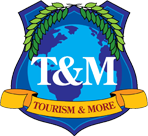Getting 2002 off to a good start
January 2002
The start of a new year is a good time to consider that travel and tourism are undergoing many innovative and revolutionary changes. Tourism and travel are big business and require us to look at our entire business plan. Old ways of doing business are no longer valid. For example, we can no longer afford to look at tourism and travel as divided into mere components, but rather must view the industry as a total business. For example, security and safety concerns cannot be divorced from ecological and hygienic matters. Those matters, in turn, cannot be divorced from the success of the hotel industry or the transportation industry.
To help you begin to think through the many components of your tourism and travel industry take a few moments to sketch out an overall map of the various substrata that touch you business and what are each strata’s strengths and weaknesses.
To help develop your map toward the future ask hard questions such as: -Where do you compete? For example, if you are a resort do you compete only with other resorts or should your competition be judged not by geographic proximity but rather by cost of an airline ticket to your locale from your major markets? If it is the latter, then your competition is anyone whose locale is the same cost from that market as your resort.
- Are you clear as to your mission? Make sure that your customers are getting the full benefits of your locale. As travel becomes more difficult and competitive our guests will be seeking greater value in (1) price, (2) quality of service, (3) uniqueness of attractions, (4) protection from inclement weather. Are you really offering people what you claim to offer? For example if you offer romantic enchantment, does your landscaping, “street-scaping”, restaurants, and attractions promote romance? Do you so overcharge that the trip feels more like an investment than an outing? It is essential that in 2002 the tourism and travel industry deliver good services and value at fair prices. A simple rule of thumb is charge for each tourism hour at an attraction about the cost of a movie. In other words, if a movie costs $7 per ticket, then charge for a two-hour experience $14 and $21 for a three-hour tourism experience.
- Create value networks. Few people chose a trip only because of a single attraction, locale, or place of lodging. Create a network of packages that add value to your product. Find ways to create interlocking discount packages not only for your out-of-town guests but also for locals who may be seeking a close to home get-away. For example, find a way to partner with a local utility or government office or create a frequent-visitors club with coupons that are good for the entire locale.
- Make your attraction unique from the competition. Too many communities have become mere copies of everyone else. Most communities today offer golf courses, shopping malls, and hotel chains. If yours are no different from those of everyone else, why come? If your beaches are polluted then they may be beautiful but are also worthless. What makes you different? Develop a particular local slant based on culture, history, natural phenomena, language schools etc. Connect the story not only to the locale but also to the needs of the clientele. Tourism centers make a profit when they are:
- Efficient in their delivery of services,
- Safe in such matters as hygiene, quality of medicine and ecology
- Secure regarding acts of crime, kidnappings, and terrorism
- Unique in their product presentation, the way they look and the something special that they offer
- Consistent in their product delivery while allowing for serendipitous visitor experiences
- Flexible in that they have trained professionals who know when to enforce rules and when to bend rules
- Easy to reach in that they have good air and ground transportation facilities.
- Do a yearly or bi-yearly assessment of your tourism product. All too often communities, attractions and places of lodging are satisfied with what they have. It is essential to realize that change is a constant not only within your tourism entity but also outside of it. Assessments should look at how the competition has changed, what changes there are in traveling-public, and if the tourism product has kept pace with the need for renewal. For example, a few years ago the traveling public placed much less emphasis on the need for personal security then it does today. In light of this major paradigm shift tourism entities that have not sought addition training and expert help may simply go out of business. Other things that an assessment should consider are:
- need for building renewal: repainting, refunishing etc.
- language updates. Is your language current, is your signage uni-lingual or multi-lingual?
- Are your products still unique? For example, if you are offering nothing more than golf courses and tennis courts or a beach experience, your products’ value has diminished greatly. Tourism assessment seeks ways to refresh these products and find ways to make them unique.



